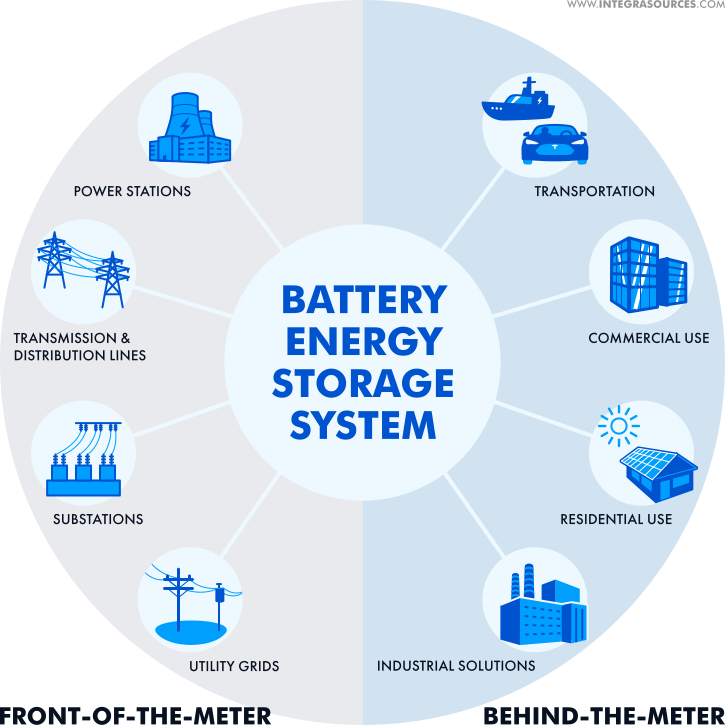
Mar . 22, 2024 14:52 Back to list
You Need to Know About an Energy Storage System (ESS)--1
An energy storage system (ESS) is a crucial device used to store energy and supply it for later use. There are different types of energy storage systems available to meet various energy needs, including battery, chemical, electrochemical, mechanical, and thermal systems. These systems play a vital role in storing and delivering energy where and when needed, leading to a more resilient energy infrastructure while providing cost savings to consumers and utilities. Additionally, energy storage systems contribute to system reliability and stability by responding rapidly to power fluctuations. The variable supply from renewable sources and the increasing demand for electricity are posing challenges for energy grids globally, making the flexibility of energy mixes essential to ensure clean energy accessibility and affordability for all.
A typical energy storage system comprises two main components: the power conversion system (PCS) and the battery management system (BMS). The PCS manages AC-to-DC and DC-to-AC conversions, with energy flowing into the batteries for charging or being converted from battery storage into AC power and fed into the grid. On the other hand, the BMS is responsible for cell charging, balancing, health monitoring, and system control and communication. As companies in the power industry increasingly turn to renewable energy sources like solar and wind, energy storage systems emerge as a critical solution to address the intermittency of these sources and ensure reliable power supply, especially during adverse weather conditions.
The drivers behind the surge in energy storage systems are diverse and reflect the evolving landscape of the energy industry. Companies are opting for renewable energy sources to generate power off-grid, improve sustainability, increase energy efficiency, manage risk, reduce emissions, and save money. Energy storage technologies play a crucial role in complementing solar and wind power by storing excess energy for later use, mitigating the impact of weather changes on renewable energy generation. Moreover, energy storage systems help electricity grids operate more cost-effectively and efficiently by running at average load levels, generating significant savings annually. As the energy storage industry continues to evolve and innovate, adapting to changing energy requirements, it is essential to understand the main drivers behind the adoption of energy storage systems.

The growing adoption of energy storage as a service (ESaaS) is enabling companies to deliver reliable power and potential cost savings to commercial and industrial (C&I) users. Two common terms in the context of energy storage are Front-of-the-Meter (FTM) and Behind-the-Meter (BTM) systems. FTM systems are used by utilities to relieve congestion on aging grid infrastructure and generating plants, helping balance grid loads and extend infrastructure life. On the other hand, BTM systems supply electricity directly to buildings and homes, minimizing grid impact and integrating features like electric vehicle (EV) charging. Researchers are actively developing energy storage technologies for BTM applications, driven by consumer awareness, cost reductions, EV adoption, and solar hybridization trends.
Energy storage systems offer several benefits, including managing mismatches between electricity supply and demand, enhancing grid resilience, ensuring the reliability of critical services, increasing facility flexibility, and preparing the grid for EV charging. These systems play a critical role in meeting loads during periods of peak demand, serving remote communities, and enhancing network resilience. The focus on energy storage solutions like stationary storage has been increasing in recent years to improve grid reliability, resilience, and demand management. Although energy storage systems provide numerous advantages, they also come with risks such as electrical fires, overheating, short circuits, and thermal runaway. An integrated fire protection system is crucial for early detection and prevention of fires in lithium-ion battery energy storage systems. Proper planning, risk assessment, performance evaluation, and safety considerations are essential for the successful deployment and maintenance of energy storage systems.
In conclusion, energy storage systems are essential components of the evolving energy landscape, offering solutions to meet the challenges posed by variable renewable energy sources and increasing energy demand. These systems enhance the reliability and stability of energy grids, provide cost savings, and enable the efficient integration of renewable energy sources into the energy mix. The drivers behind the adoption of energy storage systems reflect the changing needs of the power industry and the growing trend towards sustainability and efficiency. As energy storage technologies continue to advance, their benefits become increasingly significant in ensuring reliable power supply, enhancing grid resilience, and preparing for future energy demands. Despite the risks associated with energy storage systems, proper guidelines and safety measures can help mitigate these challenges and ensure the safe and effective deployment of energy storage solutions.
-
Stackable Battery System: Revolutionizing C&I Energy Storage with Suzhou ACDC
NewsJul.21,2025
-
Revolutionizing EV Charging with Suzhou DC Quick Charging Stations Solutions
NewsJul.21,2025
-
Revolutionize Your Power Needs with Suzhou ACDC's Portable Power Station Solutions
NewsJul.21,2025
-
Outdoor Integrated Temperature Control Cabinet: Elevating Energy Storage Cabinet Efficiency
NewsJul.21,2025
-
Container Type Energy Storage System: Revolutionizing Energy Storage with Stackable Battery Solutions
NewsJul.21,2025
-
Advanced Self-Cooling Energy Storage Cabinet Solutions
NewsJul.21,2025























